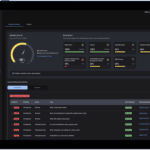Adware activity doubles in Q3

Adware doubled globally from July through September 2023 compared to the previous quarter, according to the Q3 Threat Report from Avast.
A new strain of mobile adware dubbed 'Invisible Adware' has already gathered over two million downloads in the Google Play Store. These applications display advertisements while the device screen is off, gaining revenue through fake clicks and views. This is not only contributing to ad fraud but can also impact battery life and potentially install dangerous software without the user’s knowledge.
95 percent of security professionals worry about identity threats despite confidence in their solutions

A new study of IT and security leaders at 567 US-based enterprises finds over over 95 percent of respondents say they are gravely concerned about identity-related threats.
The report from Omada shows 72 percent say their organization's users have unnecessary access and overly permissive accounts.
Reports of the password's death are greatly exaggerated

We've been hearing predictions surrounding the end of the password for many years, but a new survey of 300 US IT decision makers reveals that 68 percent say passwords aren't dead and 53 percent think they're simply evolving into something new.
The study, conducted by Censuswide for Delinea, is aimed at understanding the future of passwords in the workplace in light of recent traction by other authentication options in consumer technology such as smartphones, personal email accounts, and mobile apps.
New ransomware groups account for a quarter of all leaks

The world of cybercrime and ransomware never stands still, and a new report from WithSecure shows more advertised data leaks in the first nine months of this year than all of 2022.
‘New’ groups accounted for about a quarter of all the leaks, with Akira and 8base being particularly prominent sources.
Google launches FIDO2 compatible security key

Today sees the launch of Google's new Titan Security Key which can be used as a second authentication factor and also to store your passkeys.
Unlike the earlier FIDO1 key, Titan will also work with all other FIDO-enabled services (such as Microsoft accounts). You can also store credentials for up to 250 accounts on this key, compared to current keys which can typically only store around 25.
90 percent of SMBs fear ransomware but 65 percent don't think they're a target

According to a new report, 90 percent of SMBs are extremely or somewhat concerned about a ransomware attack, yet 65 percent don't think or aren't sure that they're a ransomware target.
The latest Cybersecurity Global Ransomware Survey from OpenText show a similarity in how small-to-medium sized businesses (SMBs) and enterprises (more than 1,000 employees) think about ransomware attacks, including this disconnect about who is a target and growing concern about the use of AI by threat actors.
Businesses worry more about reputational damage than financial loss following a breach

Following a cloud breach, the top three worries of businesses are reputational damage and loss of public trust (39 percent); loss of sensitive data (36 percent); and a loss of revenue generating services (35 percent).
A new report from Illumio, based on a survey of 1,600 IT and security decision makers by Vanson Bourne, finds that in the last year, nearly half of all data breaches (47 percent) originated in the cloud, and more than six in 10 respondents believe cloud security is lacking and poses a severe risk to their business operations.
96 percent of organizations vulnerable due to mismanaged secrets

A new study from Akeyless Security finds that modern DevOps and multi-cloud environments are susceptible to secrets-related breaches and that over 70 percent of organizations have had credentials, certificates and keys breached in the last two years.
Based on responses from over 200 professionals with security responsibility in organizations with over 1,000 employees, the report finds one in three security professionals have ranked secrets management among their top five priorities.
New non-profit seeks to get justice for cybercrime victims

Internet and cyber crimes cause financial loss and have emotional impact for people around the world. Now though a new non-profit organization has been formed to pursue justice for victims of these crimes.
Intelligence for Good aims to make the internet a safer place for everyone, and to ensure that cybercriminals are not only brought to justice but fear the consequences of scamming innocent people.
Organizations flock to generative AI despite security concerns

A new survey of over 900 global IT decision makers shows that although 89 percent of organizations consider GenAI tools like ChatGPT to be a potential security risk, 95 percent are already using them in some form within their businesses.
The research for Zscaler, carried out by Sapio Research, also reveals 23 percent of those using GenAI aren't monitoring the usage at all, and 33 percent have yet to implement any additional GenAI-related security measures -- though many have it on their roadmap.
The blurring lines between data protection and security [Q&A]

The threat landscape has evolved a lot over the past few years as cybercriminals become more and more sophisticated. This has forced change within the industry and blurred the lines between the previous separate data protection and security strategies.
We spoke to Jason Gerrard, senior director of international systems engineering at Commvault, to find out more about why this is happening and what it means for the future of the data protection and cybersecurity industries.
Malwarebytes for Business rebrands as 'ThreatDown'

In a bid to distinguish between its consumer and business offerings, Malwarebytes is relaunching its endpoint security platform for business as ThreatDown.
ThreatDown comes with a new Security Advisor dashboard and is available as a number of bundles that combine protection, threat intelligence, and expertise for IT-constrained organizations, reducing complexity and offering user-friendly security solutions.
How contextual analysis can offer insight into the human element behind cyber threats [Q&A]

Cyber threats can come in many forms, over email, messaging platforms or social media. But what they all have in common is that they seek to exploit human weaknesses.
We spoke to Chris Lehman, CEO of SafeGuard Cyber, to discover how contextual analysis of business conversations can help determine if a conversation is benign or if something suspicious is taking place, allowing action to be taken.
Governance and security are top priorities for data teams

With ever more organizations rushing to adopt AI solutions, a new report suggests that implementing stronger data governance and security controls will be a higher priority for data teams as we head into 2024.
The report from data security company Immuta finds that only half of respondents say their organization's data security strategy is keeping up with AI's rate of evolution.
Organizations plan to use more AI in the next few years

A new survey from Snow Software reveals that 72 percent of IT leaders believe their organization will be using more AI in the next two to three years.
The poll of 800 IT leaders from the United States, United Kingdom, Germany and Australia set out to assess how IT decision makers' priorities have shifted over the past 12 months and outline their top areas of focus as they head into the new year.
Recent Headlines
Most Commented Stories
BetaNews, your source for breaking tech news, reviews, and in-depth reporting since 1998.
© 1998-2025 BetaNews, Inc. All Rights Reserved. About Us - Privacy Policy - Cookie Policy - Sitemap.